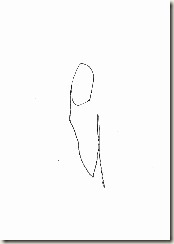
For to this you have been called, because Christ also suffered for you, leaving you an example, so that you might follow in his steps. –1 Peter 2:21
I’ve heard in the news recently that they are going to stop teaching kids to write in cursive. I think it’s a bit silly but I’m also a tad grateful. In my mind, the sooner cursive becomes a thing of the past the better my chances of never being exposed for my continual inability to write an uppercase cursive Q. Or a lower case z. Never could get those.
Do you remember learning to write your letters? My hand is starting to cramp up remembering it. You’d trace over letters over and over and over again, and then you’d try to do it on your own. That process—under-writing—is the word that Peter uses in 1 Peter 2:21 that is translated “leaving you an example”.
If we really grasp what Peter is saying here I think we’ll be in a position to not only dismiss the heretical prosperity gospel but also prepared to suffer well.
Against the Prosperity Gospel
Here is a quote I read in a sermon awhile back from one of the founders of the prosperity gospel:
I believe that it is the plan of God our Father that no believer should ever be sick…It is not—I state boldly—it is not the will of God my Father that we should suffer with cancer and other dread diseases which bring pain and anguish. No! It is God’s will that we be healed.” –Kenneth Hagin
In other words suffering is always the path of the enemy. In Hagin’s mind the one suffering is in that situation because he or she is following in the footsteps of the enemy and not Jesus. In his mind, God’s will is to rescue you from that path of defeat and transport you to the path of glory. But that’s the exact opposite of what 1 Peter 2 is saying.
The path that Jesus walked was a path of suffering. A place where he slept on rocks for pillows and his last moments were spent nailed to a cursed tree. And he did this, Peter says, for us. Not only as our substitute but also as our example. To follow Christ is to follow the path of suffering. Tracing the letters of Jesus aren’t done with golden pens. It’s a path marked with pain and heartache and suffering but one which ends in the Father’s pleasure and ultimate glory.
The prosperity gospel keeps us from suffering well because it causes us to attribute it to the wrong hand. Rather than following the biblical call to endure suffering the prosperity gospel calls us to rebuke it, and in the process we end up rebuking the very hand of God.
Against the Pit of Uniqueness
Suffering has a tendency to turn us inward. And when it turns us inward it makes quick narcissist of us. Just around the corner of narcissism is what I’ve termed the dangerous pit of uniqueness:
It is here that you will make your bed in ashes. You’ve spiraled into depression and self-pity. Here you will become jaded and your conscience seared. You, and you alone, have been abandoned and forsaken by the God who said that He wouldn’t forsake anyone. You’re stuck in this pit with no rope. You even lack the fingernails to claw your way out. You are hopeless. (From here)
But 1 Peter tells us a different story. You aren’t swimming in uncharted waters, you aren’t blazing a new course of suffering. If you are suffering for righteousness sake (as is the case in 1 Peter) then you are following in the footsteps of Jesus. You aren’t alone in your suffering. He has been there before and he knows the road to glory. Keep on tracing his steps…following his example.
Suffering Apart From Christ
There is something assumed in this passage, though, which is often dismissed. This is suffering for righteousness sake. Let’s be honest, sometimes we suffer because we have made foolish choices and/or have been rebellious and sinful. Certainly in these times we are to fix our eyes on Jesus as well, but it’s more a call to repentance than it is a call to keep your hands to the plow.
Suffering because of doing evil isn’t following in the footsteps of Jesus. He didn’t trace this path out for you. It doesn’t mean that he isn’t there, nor that He isn’t gracious and kind and willing to restore and redeem. But it does mean that such suffering will often be messy. Consider this.
Thankfully, when my son was learning to write letters I took a photo of some of his work. Here is a picture from one of those books. Notice the process. He traces it and then he tries it on his own. (That’s a good picture of sanctification—if you don’t press the analogy too far).
Some of these he knocks out of the park. He had traced some of these letters enough times that he was able to do it pretty well without a guide. Others he was still a bit off on and we had to put in more work. I’m happy to report that at the age of 9 my sons letter writing is much better than it was at this point. Practice in following the path of another has a tendency to do that doesn’t it.
Check out Isaiah’s letter “R” when he isn’t focusing on his guide:
That’s what a lot of our suffering looks like. We aren’t following the footsteps of our master and so our suffering looks ugly. Rather than following in Jesus and not reviling when reviled we respond with anger and rage. When we find ourselves in an uncomfortable position we threaten and grab for power instead of entrusting ourselves and our situation to the Lord. We claim the name of Christ but our suffering doesn’t model that of Christ because we aren’t following His steps. Our suffering is our own.
Let us follow the example of Christ and willingly suffer for the sake of righteousness, knowing that this path alone leads to glory. Remember whose hand it is that you follow. Don’t be shocked that when you follow the writing of a nail-scarred hand that you’ll have some intense suffering along the way.
—
Image source: here

